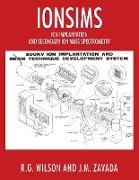- Start
- IONSIMS
IONSIMS
Angebote / Angebote:
This work incorporates the results of 41 years experience in ion implantation and 36 years in secondary ion mass spectrometry (SIMS). These two technologies became intertwined when the need became apparent for the measurement of depth distributions of elements implanted into many materials under many conditions during and after implantation, for which SIMS was ideally suited, and the realization that while SIMS was a powerful tool for this, SIMS required accurate calibration for the many elements in the many materials, for which ion implantation offered a versatile solution. In 1973, George R. Brewer and RGW published a book [John Wiley] on ion beams and ion implantation, and in 1989, Fred Stevie, Charles Magee, and RGW published a book on SIMS [Wiley Interscience]. The latter book deals primarily with SIMS of semiconductors. This present work adds metals and insulators to this list of substrate materials. The metals studied here are Be, Al, Ti, TiN, TiSi2, Ni, Cu, W, and Au. The Insulators (dielectrics) are SiO2, Si3N4, Al2O3, LiNbO3, UO2. The semiconductors are Si, Ge, GaP, GaAs, GaSb, InP, InAs, InSb, HgCdTe. There are four volumes included in this work. This volume contains material about ion implantation and applications of ion implantation and secondary ion mass spectrometry, and the beginning of implanted depth distributions measured using SIMS. Ion implantation in this volume includes a major discussion of channeled depth distributions and the measurement of electronic stopping powers using the maximum channeling depths. Another significant issue is implanter systems, and another is application of Ion Implantation and SIMS to commercial device structures. Volumes 3 and 4 are a continuation of implanted depth distributions measured using SIMS. Volume 1 contains material for secondary ion mass spectrometry (SIMS) and applications. Some new concepts of SIMS are introduced, which we call ¿ RSFs, stoichiometric SIMS, enhanced SIMS using molecules, and sol
Folgt in ca. 5 Arbeitstagen


